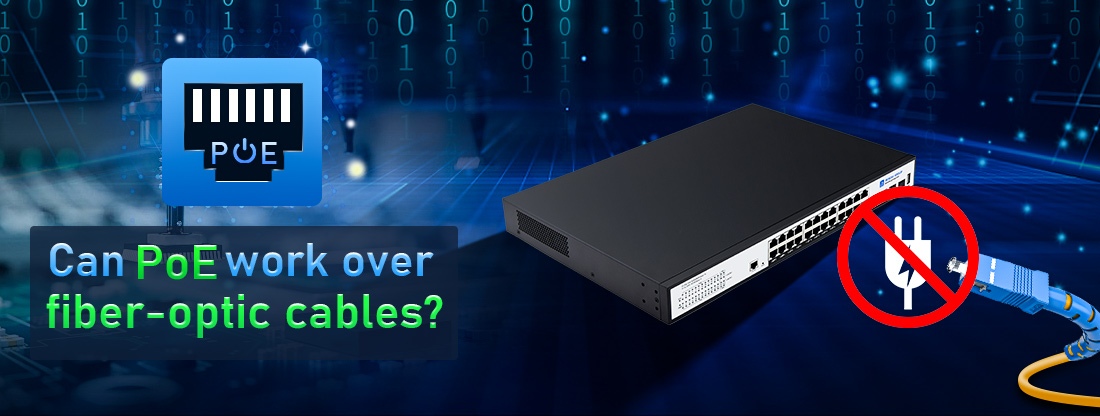
Power over Ethernet (PoE) does not work directly over fiber-optic cables because fiber-optic cables are designed to transmit data using light, and they do not conduct electricity. PoE requires copper cables (such as Cat5e, Cat6, or Cat6a) to deliver both power and data.
However, PoE can still be integrated into networks that use fiber by using additional equipment to bridge the gap between fiber and copper connections. Here’s how it can be done:
1. Media Converters
Fiber-to-Ethernet Media Converters: These devices convert the optical signal from fiber-optic cables into an electrical signal that can be transmitted over Ethernet. Some media converters also have PoE capabilities, allowing you to power devices once the fiber signal is converted to Ethernet.
Process:
1.The data signal is sent over the fiber cable.
2.The media converter receives the optical signal and converts it to an electrical Ethernet signal.
3.The media converter's PoE ports then supply power to devices like IP cameras or wireless access points.
2. Fiber + PoE Switches
PoE Switches with Fiber Uplink Ports: Many modern PoE switches come with dedicated SFP (Small Form-factor Pluggable) ports for fiber-optic uplinks. These switches allow you to connect the switch to the backbone via fiber while still providing PoE to devices on copper Ethernet ports.
Process:
1.The switch is connected to the fiber-optic backbone using the SFP port.
2.The switch’s copper Ethernet ports provide both power and data to PoE devices.
3.This setup is ideal for locations where the main data link is fiber, but the end devices (IP cameras, access points, etc.) require PoE.
3. PoE Extenders
PoE Extenders with Fiber Input: PoE extenders allow you to extend the range of PoE beyond the standard 100 meters of copper Ethernet cables. Some extenders accept a fiber-optic input and then provide PoE output on the copper side.
Process:
1.The data signal is transmitted over fiber to the PoE extender.
2.The extender converts the signal and supplies power via Ethernet to PoE devices.
Common Use Cases for PoE with Fiber:
Long-Distance Connections: Fiber-optic cables are used when devices are located far away from the main network (over 100 meters) because fiber can transmit data over much greater distances than copper Ethernet cables.
Harsh Environments: Fiber is often used in industrial settings, outdoor environments, or areas with high electromagnetic interference (EMI), where copper cables might not perform well. In these cases, PoE extenders or media converters can supply power to devices over shorter copper connections after the fiber link.
Example Setup:
A security monitoring system with IP cameras placed in a distant location:
1.Fiber-optic cables carry the data signal from the central network to a remote location.
2.At the remote site, a fiber-to-Ethernet media converter (or a PoE switch with SFP uplinks) is used to convert the signal.
3.The converted Ethernet connection provides both power and data to the IP cameras through the PoE switch.
Conclusion
While PoE cannot be delivered directly over fiber, a combination of fiber-to-Ethernet media converters or PoE switches with fiber uplinks enables the use of PoE devices in fiber-based networks. This hybrid approach allows businesses to benefit from the long-distance data transmission capabilities of fiber while still powering devices like IP cameras, wireless access points, and VoIP phones via PoE.